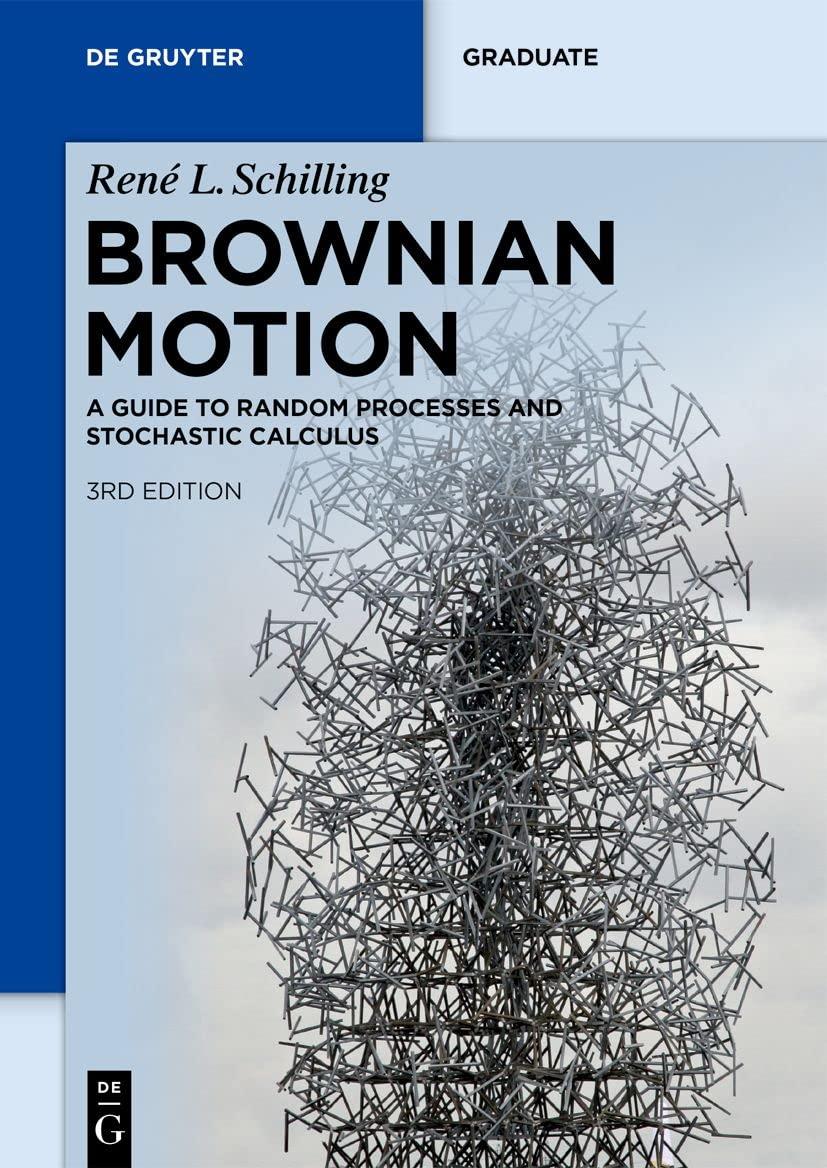Let (emptyset eq E in mathscr{B}left(mathbb{R}^{d}ight)) contain at least two elements, and (emptyset eq I subset[0, infty))
Question:
Let \(\emptyset eq E \in \mathscr{B}\left(\mathbb{R}^{d}ight)\) contain at least two elements, and \(\emptyset eq I \subset[0, \infty)\) be any index set. We denote by \(E^{I}\) the product space \(E^{I}=\{f: f: I ightarrow E\}\) which we equip with its natural product topology (i.e. \(f_{n} ightarrow f\) if, and only if, \(f_{n}(t) ightarrow f(t)\) for every \(t \in I)\). Then we can define the Borel \(\sigma\)-algebra \(\mathscr{B}\left(E^{I}ight)\) and the product \(\sigma\)-algebra \(\mathscr{B}^{I}(E):=\sigma\left(\pi_{t}: t \in Iight)\) where \(\pi_{t}: E^{I} ightarrow E, \pi_{t}(f):=f(t)\) is the canonical projection onto the \(t\) th coordinate.
a) Show that for every \(B \in \mathscr{B}^{I}(E)\) there exists a countable set \(J \subset I\) and a set \(A \in \mathscr{B}^{J}(E)\) such that \(B=\pi_{J}^{-1}(A) .\left(\pi_{J}ight.\) is the coordinate projection \(\left.\pi_{J}: E^{I} ightarrow E^{J}.ight)\)
b) If \(I\) is not countable, then each \(\emptyset eq B \in \mathscr{B}^{I}(E)\) is not countable.
c) Show that \(\mathscr{B}^{I}(E) \subset \mathscr{B}\left(E^{I}ight)\).
d) If \(I\) is not countable, then \(\mathscr{B}^{I}(E) eq \mathscr{B}\left(E^{I}ight)\).
e) If \(I\) is countable, then \(\mathscr{B}^{I}(E)=\mathscr{B}\left(E^{I}ight)\).
Step by Step Answer:

Brownian Motion A Guide To Random Processes And Stochastic Calculus De Gruyter Textbook
ISBN: 9783110741254
3rd Edition
Authors: René L. Schilling, Björn Böttcher





